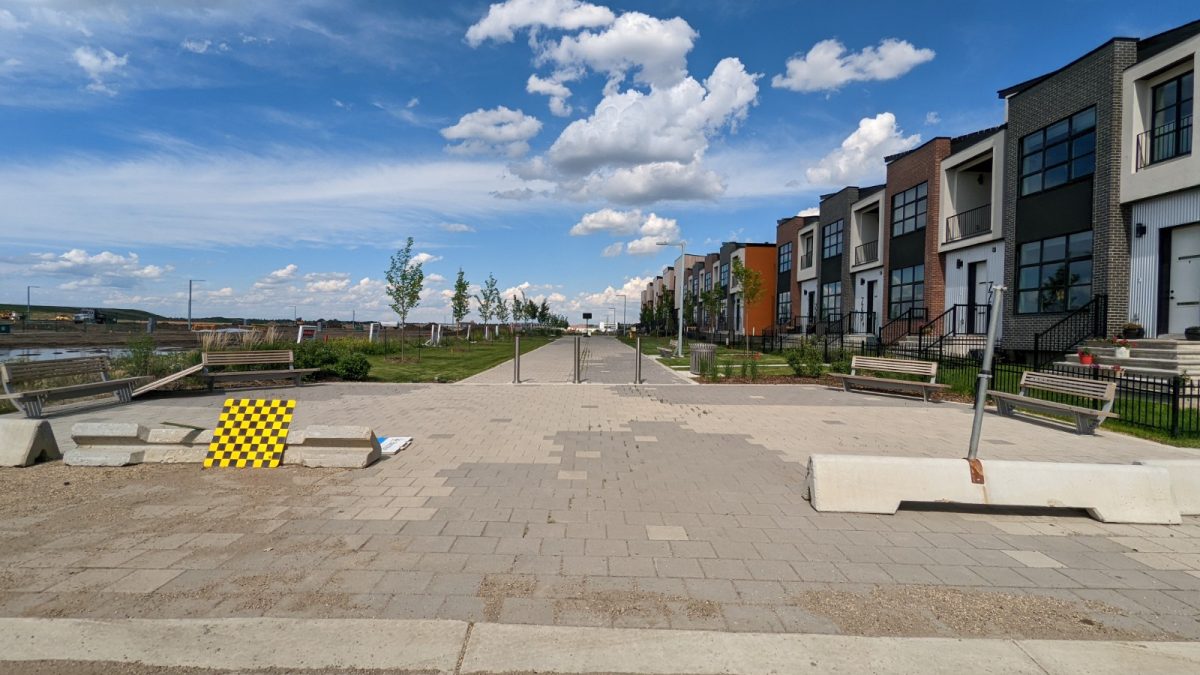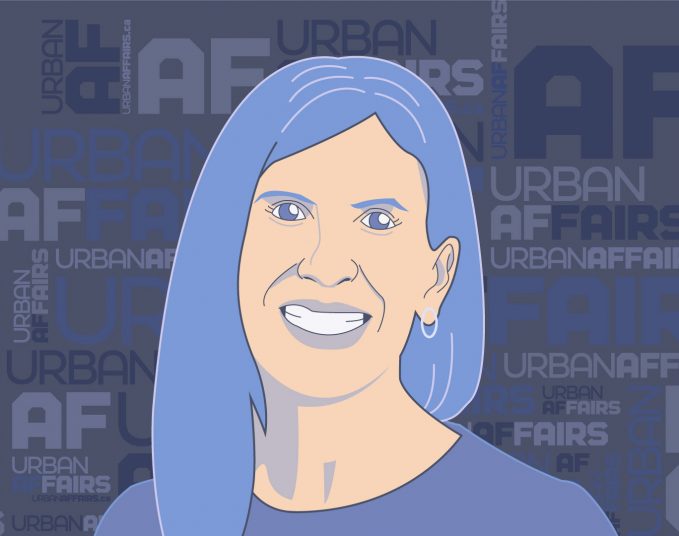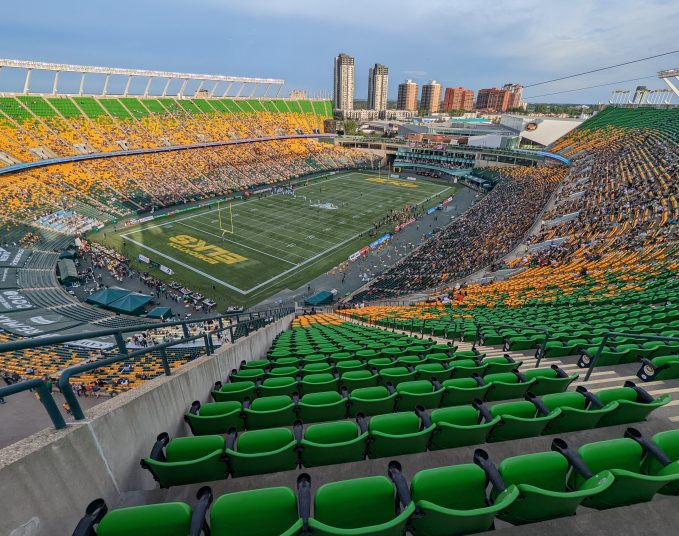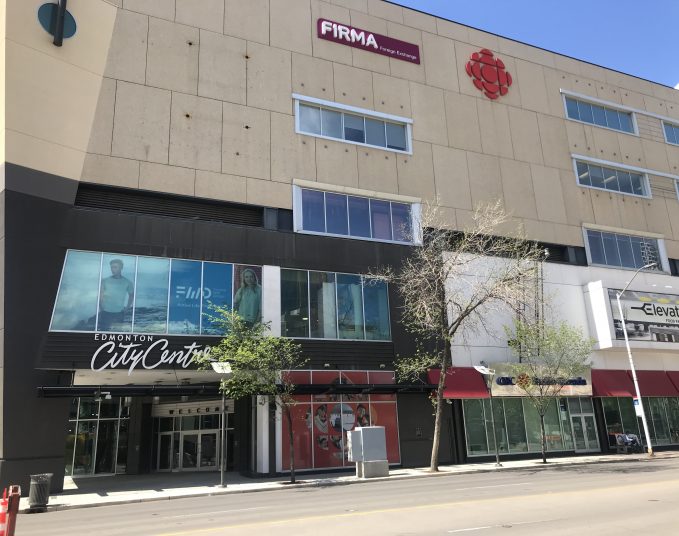The 1,624-square-foot townhouse in Blatchford is selling in the low $600,000s. It comes with three bedrooms, 2.5 bathrooms, a real brick exterior and options for both a secondary basement suite and a garden rental suite.
Developer Kim Gibbons, executive vice-president of Encore Master Builders, is proud of the company’s product. “It sells itself,” says Gibbons. “It really is top-of-the-line.” She’s referring not only to the granite countertops, nine-foot ceilings and rooftop patio, but also the townhouse’s environmental bona fides. It is heated and cooled using geothermal energy. It has highly insulated walls, roofs and floors, high-performance windows and an airtight envelope, allowing it to consume less than half the energy of the typical house in Edmonton. With a few solar panels, it would be carbon neutral. “Now that we’re finally here and developed and people are able to see it, it’s very popular,” Gibbons says.
“Here” is the 536-acre Blatchford development, one of the City of Edmonton’s signature environmental initiatives. Initially conceived in 2009, Blatchford is the repurposing of the former city-centre airport to become a carbon-neutral, affordable community for 30,000 Edmontonians. The initial prospectus assured that education, employment, entertainment and recreation will all be within a 15-minute walk of every front door. It also committed to powering Blatchford from a utility that provides heating, cooling and hot water services using geothermal, solar and other sustainable energy sources.
The City had spent $177 million on Blatchford to date, and that number does not capture all administration-staff time going back to 2009. The City also estimates that it will take a further $95 million to build out the energy system, which is less than one-third completed.
When the City approved the Blatchford Business Case in 2014, it expected 250 home sales each year starting in 2015, rising to 500 yearly units by 2018. On that basis, there should be about 2,750 units today. As of May, Encore is the biggest developer in Blatchford, having built 20 townhouses so far and started another 10. Only 32 units have connected to the utility, leaving an accumulated operating deficit of $3.7 million.
City Councillor Tim Cartmell has been raising alarm bells over the lack of progress at Blatchford. “Even a development pace of 50 units a year – 10 per cent of the plan – would have given us 350 residential units that would be generating tax revenue, utility revenue and transit fare revenue by now,” he says. “How do we declare a climate emergency on one hand and then sit back and passively watch our signature environmental initiative sputter?”
Cartmell says he’s also concerned about affordability. The City’s plan expressly states that Blatchford is to have a mix of home prices. “Six hundred thousand is not first-home affordable,” he says. “A 1,200-square-foot townhouse in Ambleside or Terwillegar Towne will be $270,000 to $280,000,” he says. “That same townhouse in Blatchford will be $400,000.”
So far, only small, niche infill builders like Encore have bought into Blatchford. The big developers, the ones who could really accelerate development with large condo and apartment projects, have so far stayed out of the fray. “We looked at it,” says Adil Kodian, executive vice-president with the Rohit Group of Companies. “Our thought process was to wait it out, let somebody else do the pioneering aspect of it and the better choice would be to wait until some of the dust settles and as the subdivision comes into fruition in year three or four.” He says he’s concerned about the significant up-front costs of large condo developments, the avant garde nature of the district energy system, and the City’s demand that large developments include street-level retail. “They’re not wrong to ask for the commercial,” says Kodian, “but who is going to lease it? How do you bring the retail in without the rooftops, and how do you bring the rooftops without the coffee shops?”
Cartmell has a couple of ideas to get things moving faster and bring in more affordable homes. He says the City could relax some of the strict architectural standards, and that it should consider lowering the asking price for the land, maybe by pegging it to the price of land in the suburbs. “We can either wait and get top dollar for the land, or we can take a little less for the land, get more people in faster, and get some revenue in from property taxes.”
Cartmell has requested a report on Blatchford’s path forward from City administration. That report is due September 28. “I don’t want to spend too much time looking back,” he says. “I’m asking, ‘When does 32 become 64? How many people will be there next year, and the year after that.’ I submit that it won’t be many if we keep doing it the same way.”
The lack of progress at Blatchford is evident from the large rooftop patio of the Encore townhouse. Looking east, a small park and playground are ready to go but empty and unused. A large open field stretches to NAIT’s main campus, about 600 metres away, where the Metro Line LRT extension is being built (at a cost of $328 million, shared between the three levels of government). To the north and west, the small cluster of builders toiling away to launch this dream is at work on a few rows of townhouses.
Encore president Kevin Read has high hopes for Blatchford. The company has pre-sold the next batch of 10 units and nine of the 10 after that. He acknowledges the slow start, attributing some of it to the COVID pandemic and some to the sluggish nature of a City-run development. He also points to the ambitious nature of the project and the challenges of being an early adopter of a district energy system. “In your first year in any new community you’re pioneering,” he says. “Then your show home opens and people start to move in, and the snowball builds and builds.”
Savvy AF. Blunt AF. Edmonton AF.




